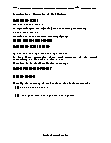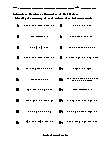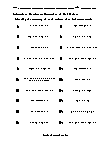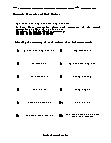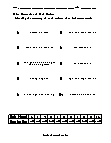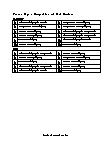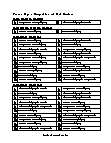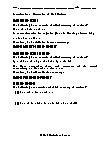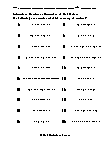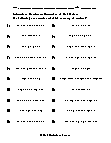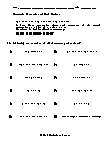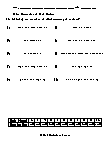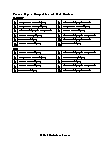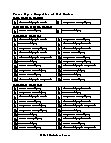Properties of Real Numbers Worksheets
What Are the Properties of Real Numbers? In the number system, real numbers are the combination of irrational and rational numbers. You can easily perform all arithmetic operations on these numbers and can represent them on the number line. On the other hand, imaginary numbers are the un-real numbers and cannot be represented on the number line. These imaginary numbers are typically used to describe complex numbers. Here we have discussed the critical properties of real numbers which help solve algebraic problems. Commutative Properties - The commutative property of addition says that you can add numbers in any order. That means that you will get the same result even If you change the order of the numbers. The commutative property of multiplication follows the same rule that you can multiply numbers in any order. Addition: a + b = b + a Multiplication: a x b = b x a Associative Property - Addition and multiplication can be performed on more than two numbers. So, if we have two or more numbers in a number sentence, we have to figure out which two numbers to associate or group first. The associative property says that we can group numbers in any order and still get the same result. Addition: a + (b + c) = (a + b) + c Multiplication: a x (b x c) = (a x b) x c Distributive Property - The distributive property is used when both multiplication and addition are involved in the same number sentence. It says that when multiplying a term by the terms within the parenthesis, we multiply each term of the parenthesis with the outside term. a x (b + c) = a x b + a x c Identity Property - The identity property tells us that when we add zero with a term, we get the same term as a result. Zero is known as the additive identity. Identity property of multiplication tells us that when we multiply 1 with any numbers, we get the same number as a result. Addition: a + 0 = a Multiplication: a x 1 = a.
-
Basic Lesson
Demonstrates how to find the equation of a line when given slope and an intercept. Two elements are interchanging; a + b = b + a Therefore it is the commutative property of addition.
View worksheet -
Intermediate Lesson
Explores how to determine the nature of complex equations. Practice problems are provided. An expression plus its negation give the identity element(0); a + b + (-a + -b) = 0 Therefore it is the additive inverse property.
View worksheet -
Independent Practice 1
Contains 20 Properties of Real Numbers problems. The answers can be found below. Identify the property of real numbers that is demonstrated.
View worksheet -
Homework Worksheet
Properties of Real Numbers problems for students to work on at home. As here first expression times each component of the second expression; a. (b + c) = a. b + a. c Therefore it is distributive property. Example problems are provided and explained.
View worksheet -
Topic Quiz
10 Properties of Real Numbers problems. A math scoring matrix is included.
View worksheet -
Basic Lesson
The following is an example of which property of numbers? x + 4y = 4y + x. Two elements are interchanging; a + b = b + a Therefore, it is commutative property of addition.
View worksheet -
Intermediate Lesson
The following is an example of which property of numbers? (3x + z) + (-3x + -z) =
View worksheet -
Independent Practice 1
The following are examples of which property of numbers? The answers can be found below.
View worksheet -
Homework Worksheet
Properties of Real Numbers problems for students to work on at home. As here first expression times each component of the second expression; a. (b + c) = a. b + a. c Therefore it is distributive property. Example problems are provided and explained.
View worksheet -
Topic Quiz
10 Properties of Real Numbers problems. A math scoring matrix is included.
View worksheet
The Basics
In algebraic expressions, letters stand for numbers. Substituting a number for each variable and performing the operations is called "evaluating the expression." Replace each variable with a number value and follow the order of operations.
Who is He?
This mathematician has kept the mathematical world up in arms saying that he proved the question that xn + yn = zn has no solution when n is greater than 2. Answer: Pierre De Fermat.

